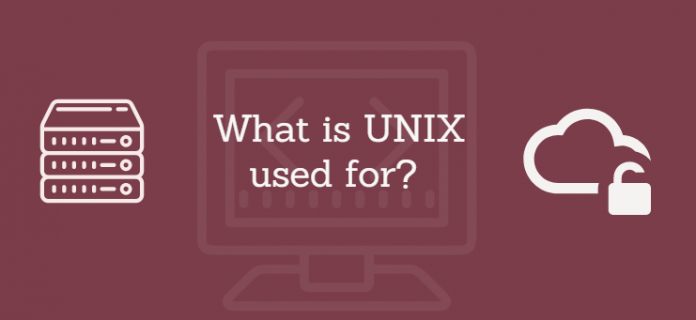In our previous topic, we introduced the UNIX operating system and touched base on what it does and its quintessential components. Furthermore, we have compared UNIX to Linx and drawn comparisons between the two operating systems. Although not as widely used as it was decades ago, it still derives some use cases in a few circles. In this tutorial, we will look at the uses cases of UNIX.
UNIX flavors
Before we look at some of its use cases, it’s important that we familiarize ourselves with some of the UNIX systems.
1) Solaris
Built for Sun Microsystems that was later acquired by Oracle, Solaris is a proprietary UNIX system. It was initially released in 1992 and by then was known as SunOS. Later, it became known as Solaris after 1993. This gave rise to new versions of Solaris OS i.e., Solaris for Power PC, SPARC, and Intel platforms. In 2010, its name changed to Oracle Solaris after the acquisition of Sun by Oracle.
2) HP-UX
Short for Hewlett Packard UNIX, HP-UX was HP’s implementation of the UNIX system. HP-UX was first released in 1984 and was based on System V version 2 which was one of the earliest versions on UNIX written by developers in AT&T labs. HP-UX came preloaded on their computers.
3) IBM-AIX
Initially launched in 1986, IBM AIX is based on System V version 3 and BSD 4.3. The idea was to make it run on IBM machines. Nowadays, it supports a wide spectrum of hardware platforms including Apple Network Server, PowerPC -based systems and PS/2 personal computers.
4) A/UX
A/UX is Apple’s implementation of the UNIX system which was tailored for macintosh computers. Initially released in 1988, it ground to a halt in 1995.
5) IRIX
IRIS is a discontinued variant of UNIX that was written by Silicon Graphics (SG) intended to run on the company’s workstations and servers. Like A/UX, it was first released in 1988 but discontinued in 2006.
6) FreeBSD
This is a free ( non-proprietary ) and opensource UNIX flavor that descended from BSD branch of the original UNIX system. FreeBSD is compatible with modern processors such as amd64, Intel x86 processors. It is popular for its speed and stability. You can even run an X windows desktop such as XFCE and KDE.
It ships with additional packages that make it ideal for server-related functions. You can configure it to act as a web server, FTP server or even a mail server. Its latest release is November 4th 2019 at the time of writing this review.
7) OpenBSD
Developed by the OpenBSD project. OpenBSD is another free and opensource system with a major focus on security, portability and standardization. In fact, OpenBSD inspired the development of OpenSSH service which is a secure protocol that later replaced telnet.
8) NetBSD
Lastly, we have NetBSD. This was the earliest release from the BSD distribution and is still being actively developed with the latest release being in February 14th 2020. Like others, it’s free and opensource and is considered fast, stable, reliable and highly secure.
What is UNIX used for?
Although reasons for using UNIX are few today than they were back in the ’80s and ’90s, popular systems such as FreeBSD, NetBSD and Oracle Solaris are very much in use, especially in Enterprise environments. Now let’s dive in and see some of the uses cases:
1) Datacenter applications support
Way past its glory days, Solaris still underpins datacenter infrastructure and applications thanks to its robust ZFS filesystem. Moreover, it is still used in distributed scientific computing, virtual server deployments, databases and web servers. On the same note, FreeBSD powers high-end servers and other tasks that are invincible to a majority of ordinary end users.
2) Cloud support
Variants such as Solaris are compatible with contemporary Cloud infrastructure such as Oracle Cloud. This gives them the ability to power cloud applications is an efficient and secure manner.
3) Enhanced cloud security
Tailored for Cloud security compliance, you can bank on Solaris to provide the much-needed security for your Enterprise applications. Not left behind is FreeBSD which also guarantees robustness, scaling and high reliability.
4) Interoperability and ease of use
Modern UNIX distributions are lightweight and easy to install. The latest additional features allow users to easily troubleshoot errors in real-time enabling you to resolve faults in the fastest time possible.
Benefits of using UNIX
Here are some of the key advantages that UNIX systems ship with:
- UNIX systems are excellent in multitasking operations. They score highly in providing high performance and reliability.
- It’s portable and easy to install.
- Modern systems pack with an intuitive and user-friendly user interface that allows user to have an easy time during operation.
- Enhanced security with additional configurations to harden the servers and keep applications secure. This makes it ideal for use in datacenters.
- Impressive stability and robustness.
Wrapping up
Though not popular as it once was, UNIX is a system to reckon with in most enterprise circles to power high-end applications and other crucial enterprise platforms. For several decades the operating system has helped to power mission-critical Information Technology operations throughout the world. However, Linux has grown in leaps and bounds and usurped most of the functionalities of UNIX. This is mostly because it is free and opensource. The future of UNIX remains uncertain as more companies embrace Linux for their enterprise needs.





